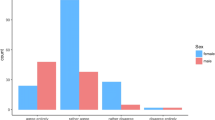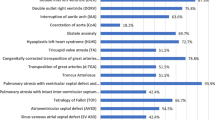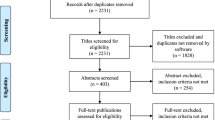Abstract
Purpose
Anatomy has historically been taught via traditional medical school lectures and dissection. In many countries, practical or legal issues limit access to cadaveric dissection. New technologies are favored by students and could improve learning, complementing traditional teaching.
Methods
All students in second-year medicine at a single medical school were submitted to a novel anatomical course with digital tool exposure. We explored a new combined teaching method: a physical blackboard lesson synchronized with digital dissection, imaging and direct evaluation (BDIE). Synchronized dissection is broadcast live in the classroom and in partner medical schools. Following the course, students completed a short survey about their perception of this new anatomic clinical course.
Results
The survey included 183 students whom 178 completed the questionnaire, i.e., a 97% response rate. Ninety-nine percent of students thought this synchronized method useful to improve their understanding of anatomy and 90% stated it helped them retain this learning.
Conclusion
This BDIE method, in conjunction with teaching guidelines and dissection, is highly appreciated by students who consider it helps them to acquire lasting knowledge.

Similar content being viewed by others
References
Bogomolova K, Hierck BP, van der Hage JA, Hovius SER (2020) Anatomy dissection course improves the initially lower levels of visual-spatial abilities of medical undergraduates. Anat Sci Educ 13:333–342
Darras KE, Spouge R, Hatala R, Nicolaou S, Hu J, Worthington A, Krebs C, Forster BB (2019) Integrated virtual and cadaveric dissection laboratories enhance first year medical students’ anatomy experience: a pilot study. BMC Med Educ 19:366
Estai M, Bunt S (2016) Best teaching practices in anatomy education: a critical review. Ann. Anat Anat Anz Off Organ Anat Ges 208:151–157
Franchi T (2020) The impact of the COVID-19 pandemic on current anatomy education and future careers: a student’s perspective. Anat Sci Educ 13:312–315
Gbolahan Balogun W (2019) Using electronic tools and resources to meet the challenges of anatomy education in Sub-Saharan Africa. Anat Sci Educ 12:97–104
Ghosh SK (2017) Cadaveric dissection as an educational tool for anatomical sciences in the 21st century. Anat Sci Educ 10:286–299
Harmon DJ, Attardi SM, Barremkala M, Bentley DC, Brown KM, Dennis JF, Goldman HM, Harrell KM, Klein BA, Ramnanan CJ et al (2021) An analysis of anatomy education before and during COVID-19: May–August 2020. Anat Sci Educ 14:132–147
Hu M, Wattchow D, de Fontgalland D (2018) From ancient to avant-garde: a review of traditional and modern multimodal approaches to surgical anatomy education. ANZ J Surg 88:146–151
Iwanaga J, Loukas M, Dumont AS, Tubbs RS (2021) A review of anatomy education during and after the COVID-19 pandemic: revisiting traditional and modern methods to achieve future innovation. Clin Anat N Y N 34:108–114
Moffett J (2015) Twelve tips for “flipping” the classroom. Med Teach 37:331–336
Moro C, Štromberga Z, Raikos A, Stirling A (2017) The effectiveness of virtual and augmented reality in health sciences and medical anatomy. Anat Sci Educ 10:549–559
Natsis K, Lazaridis N, Kostares M, Anastasopoulos N, Chytas D, Totlis T, Piagkou M (2021) “Dissection Educational Videos” (DEVs) and their contribution in anatomy education: a students’ perspective. Surg Radiol Anat 44:33–40
Paech D, Giesel FL, Unterhinninghofen R, Schlemmer H-P, Kuner T, Doll S (2017) Cadaver-specific CT scans visualized at the dissection table combined with virtual dissection tables improve learning performance in general gross anatomy. Eur Radiol 27:2153–2160
Pan S-Q, Chan LK, Yan Y, Yang X (2020) Survey of gross anatomy education in china: the past and the present. Anat Sci Educ 13:390–400
Papa V, Vaccarezza M (2013) Teaching anatomy in the XXI century: new aspects and pitfalls. Sci World J 2013:310348
Peeler J, Bergen H, Bulow A (2018) Musculoskeletal anatomy education: evaluating the influence of different teaching and learning activities on medical students perception and academic performance. Ann Anat Anat Anz 219:44–50
Peine A, Kabino K, Spreckelsen C (2016) Self-directed learning can outperform direct instruction in the course of a modern German medical curriculum — results of a mixed methods trial. BMC Med Educ 16:158
Ravi KS (2020) Dead body management in times of COVID-19 and its potential impact on the availability of cadavers for medical education in India. Anat Sci Educ 13:316–317
Ross CF, Pescitelli MJ, Smith HF, Williams JM (2020) Teaching anatomy with dissection in the time of COVID-19 is essential and possible. Clin Anat NY. https://doi.org/10.1002/ca.23640
Saverino D (2021) Teaching anatomy at the time of COVID-19. Clin Anat N Y N 34:1128
Schoeman S, Chandratilake M (2012) The anatomy competence score: a new marker for anatomical ability. Anat Sci Educ 5:33–40
Singh K, Bharatha A, Sa B, Adams OP, Majumder MAA (2019) Teaching anatomy using an active and engaging learning strategy. BMC Med Educ 19:149
Thompson AR, Marshall AM (2020) Participation in dissection affects student performance on gross anatomy practical and written examinations: results of a four-year comparative study. Anat Sci Educ 13:30–36
Triepels CPR, Smeets CFA, Notten KJB, Kruitwagen RFPM, Futterer JJ, Vergeldt TFM, Van Kuijk SMJ (2020) Does three-dimensional anatomy improve student understanding? Clin Anat N Y 33:25–33
Uruthiralingam U, Rea PM (2020) Augmented and virtual reality in anatomical education: a systematic review. Adv Exp Med Biol 1235:89–101
Acknowledgements
The authors wish to thank Régis Desneulin for his technical help and Benjamin Maes for preparing the cadavers. The authors also thank all the prosector lab students.
Funding
There is no funding for this study.
Author information
Authors and Affiliations
Contributions
DM is associate professor of digestive surgery at Nice medical school. He took part in cadaveric dissection during the duplex synchronized sessions. NB is a professor of anatomy and orthopedic surgery at Nice medical school. He shared the blackboard lectures with Patrick Baqué during the synchronized duplex sessions. He is responsible for the logistics of these sessions and their broadcasting alongside the technician. LH is an associate professor of anatomy at St Joseph medical school in Beirut, Lebanon. He took part in the cadaveric dissections during the synchronized duplex sessions. PB is a professor of anatomy and digestive surgery at Nice medical school; he is also the dean of the school of medicine. He shared the blackboard lectures with Nicolas Bronsard during the synchronized duplex sessions. OC is associate professor of plastic surgery at Nice medical school. He took part in the cadaveric dissections during the synchronized duplex sessions.
Corresponding author
Ethics declarations
Conflict of interest
The authors declare they have no conflict of interest.
Additional information
Publisher's Note
Springer Nature remains neutral with regard to jurisdictional claims in published maps and institutional affiliations.
Language editing service by Dr Brigitte Dunais, MD.
Supplementary Information
Below is the link to the electronic supplementary material.
Rights and permissions
About this article
Cite this article
Massalou, D., Bronsard, N., Hekayem, L. et al. Modern and synchronized clinical anatomy teaching based on the BDIE method (board–digital dissection–imaging–evaluation). Surg Radiol Anat 44, 803–808 (2022). https://doi.org/10.1007/s00276-022-02943-6
Received:
Accepted:
Published:
Issue Date:
DOI: https://doi.org/10.1007/s00276-022-02943-6




